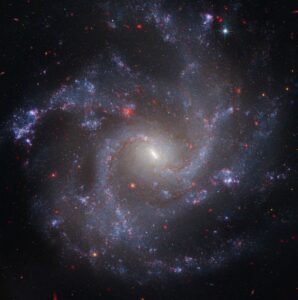
Understanding our universe isn’t a straightforward process. For every theory that appears to be beautifully proven out by data, there is another theory that just doesn’t work as it should.
One of the most troubling data issues today is the discrepancy between expansion rates for our universe that are measured by looking at the nearby universe and those that are measured by looking at the Cosmic Microwave Background. We have multiple things to look at in both eras, and in both eras, we have very precise values… and the values don’t match.
The current rate of expansion is called the Hubble Constant, and the discrepancy in measurements is dubbed the Hubble Tension.
Adam Riess is on a mission to demonstrate the accuracy of our measurements based on variable stars and supernovae. As a graduate student, he was part of the team demonstrating the universe is accelerating apart, and he received a Nobel Prize, along with his colleagues, for this discovery. In the decades since, he has pioneered new ways to use the Hubble Space Telescope to get even more accurate measurements of Cepheid variable stars, and now he has used the JWST to verify the same tension found by Hubble.
As Riess puts it: “We’ve now spanned the whole range of what Hubble observed, and we can rule out a measurement error as the cause of the Hubble Tension with very high confidence. With measurement errors negated, what remains is the real and exciting possibility that we have misunderstood the Universe.”

There are three largely watched places where this tension may get resolved.
This paper only demonstrates that our measurements of Cepheid variables are consistent between all our different telescopes of improving quality. It remains possible that our supernova data is biased in ways we haven’t discovered yet, although that looks less and less like the case.
It’s also possible the expansion rate changed at some point in the universe’s history and our current models just don’t allow for that change.
And, of course, it could be that there is something missing entirely from our understanding of the universe early, late, or everywhere, and we’ll need to add that new physics to our interpretation of our data to bring the early universe and modern universe measurements into alignment.
Time and more data will hopefully reveal the truth sooner than later. But for now, at least we know the variable stars are performing as advertised. Here is to hoping we can both use JWST to press outwards in our Cepheid variable measurements and that future missions like the Roman and Euclid space telescopes will find other data to help us relax this tension into new understanding.
